Cite this as: Kowarik, K., Brandner, D., Hofmann, K., Strasser, M. and Reschreiter, H. 2022 Researching Change - Understanding Change - Facing Change. 3500 years of human-environment relations in the Hallstatt/Dachstein region, Internet Archaeology 60. https://doi.org/10.11141/ia.60.7
Climate Change and Archaeology, the 22nd symposium of the European Archaeological Council, addressed one growing challenge to humanity while another one was already in full swing. The Covid-19 pandemic, which forced us to take our discussions into the virtual space, is of course in the first instance a health problem and has quickly become a social, financial and infrastructural challenge. But it is also a stark reminder of humanity's close interrelationship with the earth system and of the impact that 'natural' processes can have on us socio-biological beings. As we experience the forces of 'nature' to an extent that many of us might have considered a 'problem of the past', we are called upon to turn our attention to another aspect of this interrelationship. Climate change will transform the matrix of our lives in the very near future; at present we are all experiencing the dynamics of exponential growth.
So we ask, how can we as archaeologists support society in adapting to the changing climate and a low carbon future (EAC 2021, 1). As archaeologists we bring a substantial number of skills to the table such as a diachronic perspective, process understanding, interdisciplinarity and systems thinking. (This is of course something that we share with a number of other disciplines, and we need to work together to address these challenges.) We, together with our colleagues from the earth and bio sciences, deal in the long-term observation of socio-ecological systems, the impact of boundary breaches, transformations and processes of adaptation to environmental and social change.
In this article we present a selection of the research and outreach activity carried out in the UNESCO World Heritage area Hallstatt-Dachstein/Salzkammergut (Austria) to discuss how interdisciplinary research with a strong archaeological component can contribute to the understanding of socio-ecological systems and how this might help to address future challenges and also what role archaeologists can play in communicating and engaging with climate change (EAC 2021, 1).
At first glance, one might miss that the Hallstatt-Dachstein/Salzkammergut area is a World Cultural Heritage Site, but this landscape has been shaped by its long industrial history, the extraction of rock salt, stretching from the Stone Age until today. This exceptional landscape, located in the Eastern Alps, was listed as a UNESCO World Heritage Site in 1996.


Large-scale underground salt mining in the Hallstatt salt mountain is documented from the 14th century BC to the present day with short interruptions (Festi et al. 2021). In addition, remains of a Bronze Age meat-curing industry and the cemetery of the Iron Age miners are located in this narrow valley.


The depth and size of the prehistoric mine workings as well as the sheer number of prehistoric tools and working materials left in the mines document the substantial near-industrial scale of salt mining in Hallstatt as early as the Bronze Age (Kowarik et al. 2019).
Figure 6: Hallstatt prehistoric salt mine. Image credit: D. Brandner/NHM Vienna. View on Sketchfab
The extraordinary preservation conditions inside the salt mines enable insights into prehistoric life. Dense layers of production waste reaching a thickness of several metres were excavated in the Bronze Age and Iron Age mine workings in the Hallstatt salt mountain, uncovering thousands of wooden tools and construction elements, implements made from fur, rawhide, hundreds of woollen textile fragments, and grass and bast ropes. Just recently the consumption of blue cheese and beer was documented through DNA analysis of excrement from Iron Age miners (Maixner et al. 2021).
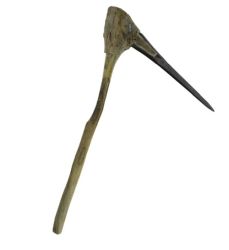

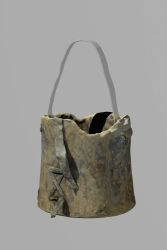
This landscape provides ideal conditions to study the impact of environmental change and human-environment relations for several reasons:
Until recently human-environment relations in this area were not well understood, but this has begun to change through a targeted research programme. In our research we focus on understanding the evolution of this highly complex socio-ecological system through the integrated investigation of cultural and natural archives. We are also dedicating a substantial amount of our efforts into establishing a lasting inter- and transdisciplinary network.
This project is part of the international Earth System Science research framework, which in Austria is curated by the Austrian Academy of Sciences. The project itself was hosted at the Natural History Museum Vienna in cooperation with inter- and transdisciplinary partners.

Our research goal in this project was to investigate the interrelation between environmental change and human land use dynamics in the late Holocene. The principal objectives were to investigate how certain types of extreme events influenced the socio-ecological systems and to trace the development of human-environment relations in the UNESCO World Heritage region Hallstatt-Dachstein from the beginnings of underground salt mining in the Hallstatt High Valley dating from the 14th century BC until the present day.
A well-resolved palaeoenvironmental record was established based on the palynological analysis of a peat core from the Siegmoos bog (Festi et al. 2021; Knierzinger et al. 2021) and lake sediments (Drescher-Schneider et al. in prep). It could be demonstrated that the communities living in the landscape were well aware of system boundaries, managed raw material resources, such as forests, accordingly and had substantial resilience in face of natural hazards over the last 3000 years. Bronze Age forest management practices were reconstructed (Grabner et al. 2021). An inventory of late Holocene geologic and climatic extreme events was set up based on bathymetric mapping and seismic surveys of the lake basin (Strasser et al. 2020), analysis of long and short sediment cores (Lauterbach et al. in review; Strasser et al. 2020) and geoelectrical investigations of landslides in the High Valley as well as an analysis of historical written records (Kowarik et al. in prep). A new picture of environmental dynamics and human response during prehistory in the research area has emerged, indicating a higher frequency of extreme events than hitherto expected and substantial resilience of human communities in the face of these events. Finally, we were able to establish a research network integrating inter- and transdisciplinary partners from a wide range of institutions and individual backgrounds.
The palaeoenvironmental record established through Facealps reconstructs the last 6000 years in mid-level time resolution through the Siegmoos bog (Festi et al. 2021) and the last 2300 years in high resolution through the sediment cores taken from lake Hallstatt in 2012 and 2016 (Lauterbach et al. 2017; Lauterbach et al. in prep). A sedimentary sequence covering the early Holocene and late Glacial periods, and thus reaching back over 11,700 years in high resolution, was urgently needed. But to achieve this it was necessary to overcome the coring limit of ~16m (stratigraphic age ~2,300 cal BP) by deploying the newly developed hydraulic coring system Hipercorig (Harms et al. 2020). To do so the Hipercorig coring consortium was set up in 2020 under the lead of Michael Strasser (University of Innsbruck) with partners from the Natural History Museum Vienna, the University of Bern and the GeoForschungsZentrum Potsdam. The project was mainly funded by the Austrian Academy of Sciences (ÖAW), the University of Innsbruck and the Verein der Freunde des NHMW (project website).
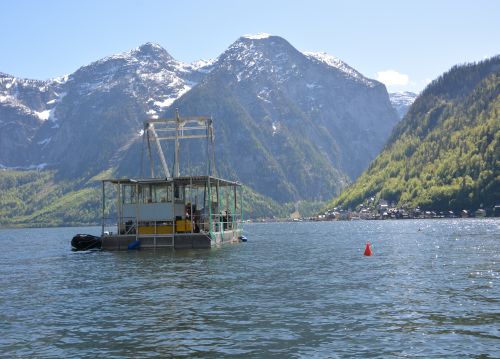
Figure 9b: Time lapse video of the six-week coring campaign, Ortler/Rittmannsperger/Kowarik/Strasser/Reschreiter/NHM Wien & UIBK from SEADDA COST Action on Vimeo.
A six-week coring campaign in spring 2021 resulted in the successful retrieval of two nearly continuous sedimentary sequences, 41m and 51m in length, reaching a new depth record for scientific coring in an intramountainous lake. At present the cores undergo 3D-structural (X-ray computed) tomography, sedimentological, physical and element chemical core logging and scanning analysis at the Austrian Core Facility for scientific core analyses, University of Innsbruck, and organic macro remains are being measured by radiocarbon analyses as input for high-resolution chronological modelling within the ÖAW-IGCP project S4LIDE-Hallstatt project.
Several project proposals are underway for multiproxy based research covering themes from Holocene activity in alpine landscapes, long-term investigation of human-environment relations and human response to natural hazards as well as research on past climate changes and their effects on human land use in mountain regions. This lays the foundation for new and highly innovative research on human-environment interrelations, human response to natural hazards as well as past environmental and climatic conditions in one of the World's oldest cultural and industrial landscapes.

In the Saltscape Hallstatt project we investigate the evolution of the socio-ecological system on the high alpine karstic plateau of the Dachstein mountain range. This landscape has seen steady human activity at least since the Bronze Age, when it was used as pasturing ground, ritual landscape and communication corridor (Mandl 2015; Kowarik 2019). We are particularly interested in addressing the question of the vulnerability and resilience of human societies in this challenging landscape and to observe in detail the reactions of the high alpine ecosystem to climate change in a diachronic long-term perspective (https://www.dainst.blog/crossing-borders/2021/10/29/zu-besuch-in-der-salzlandschaft-hallstatt/).

The project is part of the research programme Groundcheck, which was designed to address two challenges: i) investigate past climate and societal dynamics, and ii) support research on heritage in view of climate change. It is one of nine research clusters of the German Archaeological Institute and funded through of the Ministry of Foreign Affairs of the German Government.
In our first field campaign we cored the alpine lake Grafenbergsee, which is located at 1600m asl and is in close proximity to Bronze Age pasture sites. A surface drill core of 1.5m and two sediment sequences of 5m and 6m length were retrieved and are currently under investigation at the Institute of Geology (University of Innsbruck).

Figure 13: Drone flight over coring platform at Grafenbergsee. Image credit: R. Scholz/RGK. (View on Vimeo)
Further multiproxy analysis will target the human impact of landcover and vegetation composition as well as societal and ecosystemic response to climate change. The overall objective of these research activities is to build a highly resolved multiproxy record integrating a wide range of cultural and natural archives. This forms the basis for the modelling of landcover change as well as human-/animal-environment interactions.
The number of field campaigns and the stakeholders involved in enabling these activities have strongly contributed to the growth of our transdisciplinary network and the integration of citizen science activity into our research programme.
Not only is the saltscape of Hallstatt well suited for the study of the impact of climate change on socio-ecological systems, it is also a good place to engage with individual people and institutions on this topic.
The Natural History Museum Vienna has a long-standing presence in the region. It has conducted archaeological excavations in the Hallstatt High Valley since the 1960s in cooperation with the salt mining company, Salinen Austria AG, and its tourism branch (Salzwelten GmbH), so there is a well-developed local network. In addition, the UNESCO area Hallstatt-Dachstein is a tourist hotspot. In addition, the Hallstatt High Valley represents a substantial visitor attraction with guided tours into the salt mines, which are managed by Salzwelten GmbH. Outreach activities are organised in close cooperation between the Natural History Museum Vienna and the Salzwelten GmbH. This offers a twofold opportunity to engage in the long term with the local population and to communicate with a wide national and international audience. With infotainment we can reach more than 100,000 visitors each year with the history of salt production in Hallstatt.

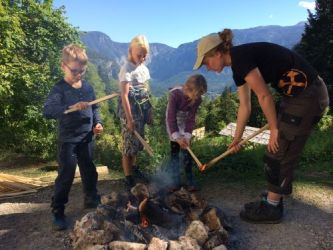
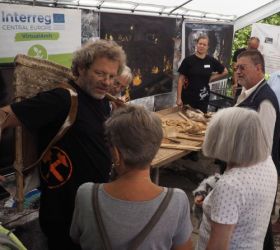
One of the substantial challenges is the invisibility of this World Heritage hidden under the earth and in the salt mountain. Therefore, virtual and augmented reality are a focus of our work, as well as experimental archaeology (Reschreiter et al. 2019).
Through these activities we aim to convey on a general level the processual and historical nature of human-environment relations, systems complexity, and the way scientific knowledge is generated. More specifically, we aim to communicate and engage on these questions:
A selection of recent and future projects is described below.
The Interreg Project VirtualArch is driving the visualisation of this underground World Heritage Site. Viewers can virtually walk with Bronze Age miners through the enormous shafts and mine salt with them in the mining works using a bronze pick.

One focus of the coming work will be to visualise how research is done on the finds from the mines, i.e. which analyses are performed, which techniques are used for the analyses and which labs are commissioned to perform them. It will soon be possible with the aid of VR glasses to start out in the Hallstatt mine, teleport to the dendrochronology lab analysing the wooden tools or to the core scanning lab analysing the sediment cores. A basic lab tour via 360° panoramas is already available.
To actively engage people visiting this World Heritage site, in cooperation with the Salzwelten GmbH we developed a sustainability parcour through the High Valley. This themed adventure trail is aimed at families with children. At various points on the trail visitors have to solve riddles and challenges revolving around raw materials and resource consumption. One of the main messages is the relation between energy need and resource consumption, as well as historical and processual thinking.
To contribute to the creation of transformative knowledge and to promote the establishment of participatory structures we plan to develop a serious game based on the history of this landscape, one that revolves around sustainability themes such as resource consumption, human-environment relations and that strengthens system and complexity thinking. This will also allow us to target new audiences.
Resilient long-term socio-ecological systems are characterised by a thorough understanding and respect of system boundaries and an efficient social compliance management preventing overshoot (Ostrom 2015). Reconstructing the evolution of these systems and observing their dynamics using computer modelling provides the basis for a thorough and specific understanding of these systems. This understanding is urgently needed to enable a successful translation of past practices into socially acceptable practices for the societies of the 21st century. These objectives can only be achieved through inter- and transdisciplinary research frameworks. Archaeology alongside Earth and Bio Sciences as well as Complexity Research can contribute to these objectives.
Going from research to public engagement and further to effective translation of research results into societal practice requires substantial transdisciplinary expertise. Archaeologists can play an important role in forming these partnerships, as we usually have good networks with local institutions and individuals. Field campaigns where a large number of stakeholders have to be contacted and informed about research objectives and methods can serve as focal points for community engagement and community building. Archaeology in general has the potential to teach systems and complexity perspectives as well as to educate about the value of raw material and resource consumption. Again, this can only be done well in cooperation with other fields of expertise. Finally, networking with other initiatives is essential to build critical mass and bring together the necessary expertise.
We thank our many supporters who have provided us with financial, infrastructural and organisational support. Especially we would like to thank the Austrian Academy of Sciences (Earth System Science programme), the University of Innsbruck, GeoForschungsZentrum Potsdam, the Federal Foreign Office and the Bundestag of the Federal Republic of Germany for supporting the programme Groundcheck, the German Archaeological Institute, the Salinen Austria AG, the Salzwelten GmbH, the Austrian Forestry Service, the association Freunde des NHM Wien, UWITEC Gmbh, Frauenhofer IEG, the municipalities of Hallstatt, Obertraun and Bad Goisern, the fire brigade and water police Hallstatt as well as the farming associations Grafenbergalm, Schildenwangalm and Weißenbach, the federal countries of Upper Austria and Styria, and Bodo Hell.
Internet Archaeology is an open access journal based in the Department of Archaeology, University of York. Except where otherwise noted, content from this work may be used under the terms of the Creative Commons Attribution 3.0 (CC BY) Unported licence, which permits unrestricted use, distribution, and reproduction in any medium, provided that attribution to the author(s), the title of the work, the Internet Archaeology journal and the relevant URL/DOI are given.
Terms and Conditions | Legal Statements | Privacy Policy | Cookies Policy | Citing Internet Archaeology
Internet Archaeology content is preserved for the long term with the Archaeology Data Service. Help sustain and support open access publication by donating to our Open Access Archaeology Fund.